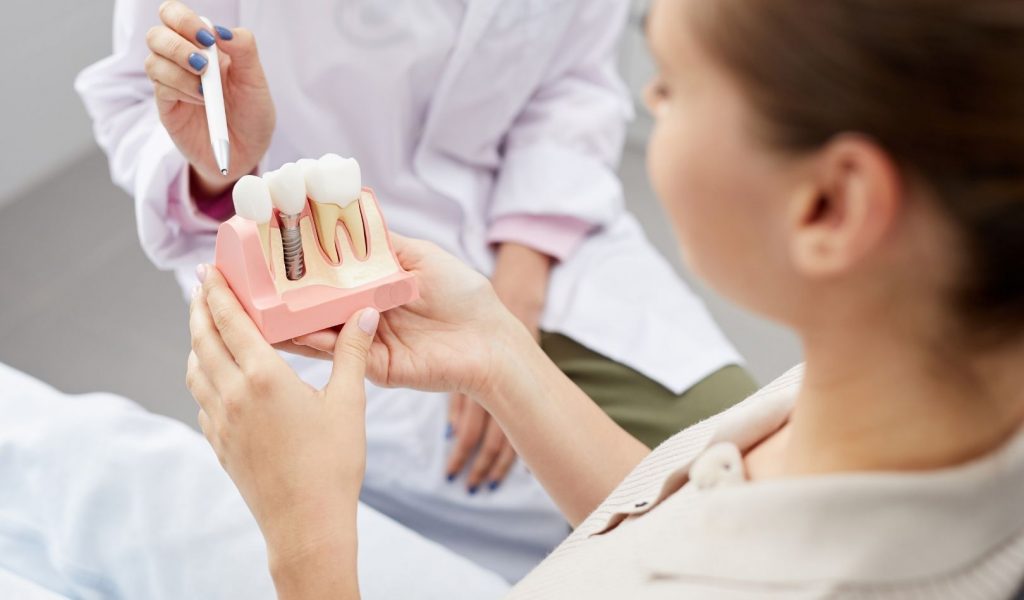What is Dental Implant Restoration?
A dental implant is a procedure that involves placing an implant post into the jawbone to replace a lost tooth root. Then, a porcelain crown is placed on top of the implant to replace the missing tooth.
Advantages of Implant Restoration at Raya Dental Clinic
Implant restoration is the only method that can prevent bone loss. With dental implants, the artificial roots are directly linked to the strong jawbone, allowing the implant teeth to withstand the same or better chewing force than natural teeth. In addition, implant teeth have an extremely long service life due to the even distribution of chewing force, and the connection of the implant to the bone becomes more durable over time. With proper care, dental implants can last a lifetime.
Dental implants are recommended in the following cases:
- Total tooth loss: Dental implants are the most effective method of replacing teeth in patients who have completely lost their teeth.
- Loss of one or more teeth: Dental implants can be used to replace missing teeth without affecting other teeth.
- Severely damaged teeth: In cases where a patient’s teeth are severely damaged and cannot be restored by other treatments, dental implants are a good alternative.
- Jawbone deterioration: Dental implants can be used to reconstruct the jawbone and keep the jaw structure stable in patients with jawbone deterioration due to tooth loss.
- Inability to use conventional dentures: In some cases, patients may not be able to use conventional dentures due to difficulty in holding or tolerating them, and dental implants may be a better alternative.
Patients should discuss with their dentist whether dental implants are the right option for them before deciding to undergo the procedure.
Dental Implant restoration process at Raya Dental Clinic
To ensure the best results, RAYA Dental Clinic has developed the safest and most optimal implant procedure using Safe Tech technology, which includes the following steps:
Step 1: Clinical examination of oral health.
Step 2: Taking X-ray images with ConeBeam CT machine and scanning the oral cavity structure with 3Shape or iTero 5D machine.
Step 3: Creating a treatment plan with Safe Tech, using AI.
Step 4: Consulting the treatment protocol from 3D images on the software.
Step 5: Sending the treatment protocol to the patient via registration information.
Step 6: Placing the implant post.
Step 7: Checking and cutting the thread.
Step 8: Placing the healing post and installing the porcelain teeth.
Step 9: Installing the final porcelain teeth and completing the teeth implantation process.
Note that patients should discuss the implant procedure with their dentist to determine if it is the best option for their oral health.



